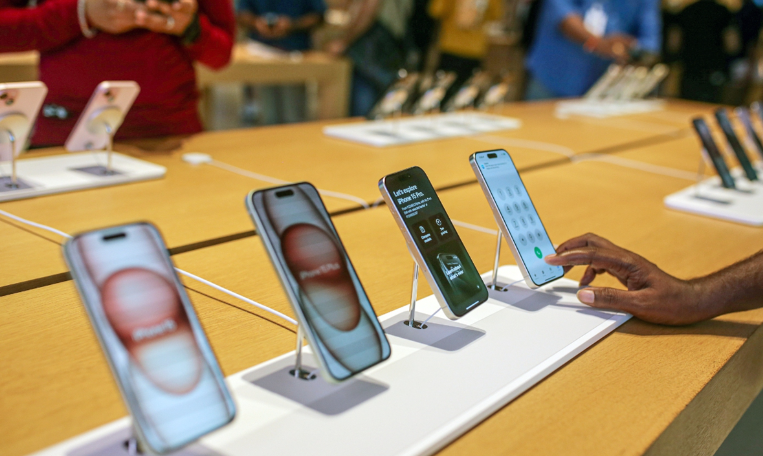
Understand why, despite the ads, India still works as a “plan B” for Apple, far from taking the place of the robust Chinese infrastructure
When Tim Cook, CEO of Apple, announced to investors earlier this month that iPhones sold in the US would soon be produced in India, the news repercussions intensely in the global industrial scenario. After two decades of “designed in California, made in China,” it seemed that a significant change was occurring in the foundations of economic globalization.
In a way, this change is really happening. Apple has expanded its presence in India consistently, with its main production partner, Foxconn, building large industrial complexes across the country. Currently, Apple already sets up a considerable portion of its smartphones in India. However, it is crucial not to confuse this movement with a complete transformation.
What is observed in India is not a transfer of Apple’s industrial engine, but a careful diversification – A kind of insurance policy, not a definitive replacement. If we remove the label “Manufactured in India” from one of these new iPhones, we will still find the strong Chinese influence in all aspects: components, suppliers and technical knowledge of manufacturing.
Despite all recent progress, India is still far from being able to replace China in iPhones production. This is not due to the lack of ambition, but the absence of a industrial ecosystem robust.
Apple-China co-creation
The history of the partnership between Apple and China goes beyond simple outsourcing. It is a narrative of co-creation. Over the past two decades, Apple has not only been integrated with the Chinese system, but has also contributed actively to build it. When the company needed aluminum carcasses with exact color gradients or non -defective translucent plastics, Apple engineers were sent to train Chinese workers from scratch. When new tools were needed, Chinese suppliers acted promptly, adapting in a matter of hours. Since 2008, Apple trained more than 28 million workers in Chinahe invested billions in local infrastructure and established a complex partnership network with Chinese giants such as BYD, Luxshare, Goertek and Wingtech.
This arrangement is what analysts call “Red supply chain”: A highly integrated, agile and extremely responsive ecosystem that China has perfected and no other country, including India, has been able to replicate so far.
Challenges of India
India is striving, but its main role is still to finalize devices that are most critical parts produced elsewhere. Almost all chips, sensors, canvas and cameras of the iPhones mounted in India are still originating from China or from Chinese capital suppliers. If a serious interruption occurred in China – whether by tariffs, geopolitical issues or other crises – India would not be able to absorb demand. The scale, speed and capacity simply do not exist.
India’s challenges are not just logistics, but structural. First, Indian manufacturers tend to be smaller and less capitalized than their Chinese competitors. They lack economies of scale, which translates into lower productivity and higher costs. Most Indian companies do not yet have the quality control or vertical integration needed to gain Apple’s confidence in the production of complex components.
Secondly, India’s domestic electronics market is modest compared. Unlike China, which offers a vast local demand to support supply chains, India cannot yet offer the same scale. Consequently, multinational suppliers have little encouragement to develop deep manufacturing skills in India and the necessary for the final assembly.
Third, the Indian industrial ecosystem is still immature. India does not yet have the density of precision tool manufacturers, component suppliers or logistics service providers that make the Chinese system so agile. There are improvements, especially with the support of government incentive programs, but the country is still far from reaching a critical mass.
The Way Ahead and the Apple Strategy
This does not mean that India cannot succeed. In fact, the way to follow is already known. Countries such as Japan, South Korea and China started their industrial rise by hosting foreign companies. Over time, their domestic companies absorbed the best practices, climbed the value chain and developed their own leaders. India could do the same – if you are willing to bet on the long run – but it will take years, perhaps decades.
For Apple, the pressure to diversify is real. The US trade war has disruptive global supply chains, and the recent Trump administration speculation about a 25% tariff over iphones made abroad only highlight political risks. Thus, Apple is doing what he has always done best: to seek balance.
The company is creating the Appearance of a strategic change – Investing in India, opening new lines in Vietnam and buying TSMC factory chips in Arizona. However, the underlying reality remains unchanged: the vast majority of iPhones production still depends on Chinese capacity, coordination and culture.
In this context, India is not replacing China; She is complementing – offering Apple a little maneuver margin, a “plan B” and a visible sign of “disruption” from the supply chain. This is valuable. But it is not synonymous with independence.
The future of India as a global manufacturing hub is still being written. Your engineers are talented, your workforce is young and your government is committed. With the right investments, the right partners and enough time, India can absolutely become a world -class manufacturing base – not just for Apple, but for the technology industry in general.
However, the current iPhone supply chain is a wonder of complexity and accuracy, forged over decades through confidence, iteration and constant improvement. Replacing this is not just a matter of policy or ambition; It is a matter of replication, scale and time.
For now, the most iconic product in the world can bear a new label, but the soul of the iPhone – its circuitry, its supply chain, its silent efficiency – still resides in China.
The author is an associate researcher at the International Cooperation Center of the National Commission for Development and Reform.
Source: https://www.ocafezinho.com/2025/05/29/india-nao-e-a-nova-china-do-iphone/

